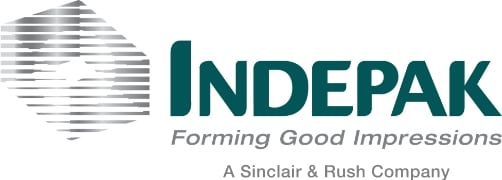When you search for barrier packaging, you’ll see many images of shrink-wrapped items and flex bags, but that’s just part of the barrier packaging industry. For us, as thermoformers of rigid plastic materials, we also incorporate barrier packaging into our designs.
What Is Barrier Packaging?
Barrier packaging basically is any type of packaging that provides a protective barrier for a product. It’s often a food product, but barrier packaging also can be used to protect medical kits and static-sensitive products, such as computer components or electronics.
The flexible plastic bags we often see in stores are one type of barrier packaging, protecting food products from the elements and spoiling as well as the effects of UV rays. Barrier bags also are used to protect electronics. It might be a vapor barrier bag or even an anti-static bubble wrap bag.
At Indepak, we don’t design flexible packaging or barrier bags; we design rigid thermoformed packaging, such as thermoform trays, blister packs and clamshells, as well as cups, tubs and lids.
So how does barrier packaging come into play for us?
Think about a tub of butter. The plastic tub holds the butter and there’s a plastic lid on top to make it easy for consumers to use a portion of the product and then save the rest for later. But, that first time you open your butter, there’s a thin plastic barrier between the lid and the food product.
This is the type of barrier packaging we are talking about. These plastic barrier films are tamper-evident, which makes it easy for consumers to know if a product is safe to use. These barrier films also keep oxygen away which prevents or delays food spoilage. This type of barrier packaging also might be referred to as tray lidding film as there is a protective film placed over the tray or package.
With barrier films we can produce what is known as modified atmosphere packaging. This type of packaging will keep oxygen away and we further preserve food by introducing gases such as nitrogen and carbon dioxide. Modified atmosphere packaging can be used with many different types of food products, extending shelf life by days or even weeks.
Within the medical industry, we can design custom trays for various medical devices and medical kits and these trays can be sealed with a barrier film. This type of barrier packaging ensures that all equipment, syringes, vials and other items are sterile and safe.
For consumers, many other products need to remain sterile until use. For instance, think about those little plastic cases that hold contact lenses. This is also barrier packaging, as the contact rests in the plastic area surrounded by saline and protected by a barrier film.
Many retail products, such as personal care items, also might be formed from rigid materials and feature a barrier film. For instance, a jar of moisturizing cream might have a barrier film in between the jar and lid. This protects the product and is tamper-evident so consumers can ensure they aren’t purchasing potentially damaged products.
Blister packaging also is a type of barrier packaging. Think about over-the-counter medications. These often are sold in blister packs with single-dose cavities and we place a barrier film over the back of the blister pack to keep the items safe. A bottle of aspirin or another medicine also will have a barrier film between the bottle and lid and perhaps additional plastic around the lid to ensure that the item is tamper evident for consumers.
We can design these bottles as well as custom base webs for medications. The plastic part of the package, which features all of the cavities, is known as the base web and it will be sealed and protected with a layer of barrier film.
A Word About Plastic
Using barrier packaging and barrier films can be an excellent way to protect your product, but plastic in and of itself also provides a high level of protection. Many plastics are water and moisture-resistant, mold-resistant and resistant to many solvents. Additionally plastics are highly impact-resistant, which is a huge advantage over many other materials.
Plastic is a highly affordable material, and the light weight further reduces your operating costs. After all, it costs less to transport lighter items, and shipping and transportation costs are quite expensive.
Additionally, nearly all of the materials we use at Indepak are recyclable. We can design packaging made from easy-to-recycle materials as well as packaging with recycled content. Some of our barrier packaging also can be made using starch-based bioplastics. When you give us a call, be sure to ask about our many sustainable options.
What Can Indepak Provide?
At Indepak, we can provide you with any type of rigid packaging you might need to create your barrier packaging. We can produce just about any type of thermoform trays you might need.
We create barrier packaging for many industries, particularly for the specialty foods, medical, pharmaceutical and personal care industries. We’ve been serving these industries, as well as the electronics and retail industries for more than 50 years. If you need custom barrier packaging, give us a call and we can discuss your project.





